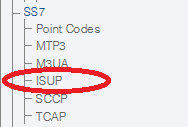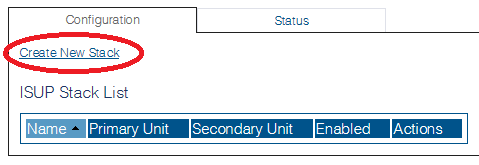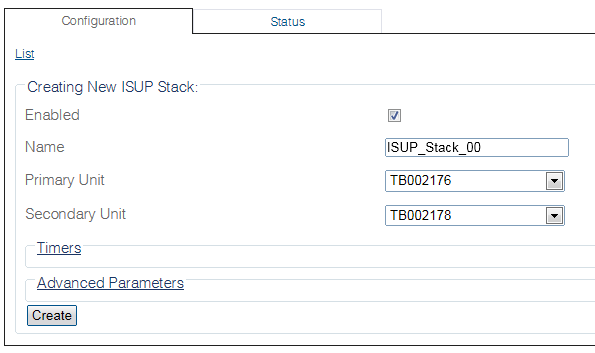Toolpack:Creating an ISUP Stack D
From TBwiki
(Difference between revisions)
m |
|||
| (One intermediate revision by one user not shown) | |||
| Line 1: | Line 1: | ||
| − | |||
{{DISPLAYTITLE:Creating an ISUP Stack}} | {{DISPLAYTITLE:Creating an ISUP Stack}} | ||
| + | {| class="wikitable" | ||
| + | |- | ||
| + | |rowspan="3"|This article applies to: | ||
| + | |'''Product''' | ||
| + | |'''Version''' | ||
| + | |- | ||
| + | |Tmedia | ||
| + | |2.9, 2.10, 3.0, 3.2 | ||
| + | |} | ||
| + | |||
The ISDN user part (ISUP) is the highest layer in the SS7 signaling stack and is responsible for the handling of calls. Once you have configured the MTP3 layer of your SS7 system, you must create an ISDN user part stack. | The ISDN user part (ISUP) is the highest layer in the SS7 signaling stack and is responsible for the handling of calls. Once you have configured the MTP3 layer of your SS7 system, you must create an ISDN user part stack. | ||
To create an ISUP stack: | To create an ISUP stack: | ||
| − | |||
1- Click '''ISUP''' in the navigation panel. | 1- Click '''ISUP''' in the navigation panel. | ||
Latest revision as of 13:41, 25 November 2020
| This article applies to: | Product | Version |
| Tmedia | 2.9, 2.10, 3.0, 3.2 |
The ISDN user part (ISUP) is the highest layer in the SS7 signaling stack and is responsible for the handling of calls. Once you have configured the MTP3 layer of your SS7 system, you must create an ISDN user part stack.
To create an ISUP stack:
1- Click ISUP in the navigation panel.
2- Click Create New Stack
3- Configure the new ISUP stack:
- Make sure the box labeled Enabled is checked
- Enter a name for the stack
- Select a primary hardware adapter
- Select a secondary hardware adapter
- Click Create
4- Verify that the "IsupStack was successfully created" message appears
Path
/configurations/@[configuration_name]/isup_stacks/@[isup_stack]
Parameters (text)
/configurations/@[configuration_name]/isup_stacks/@[isup_stack] enabled = true isup_options = [ "Event information accept all values", "Extra called number bytes", "Extra calling number bytes" ] name = "@[isup_stack]" primary_hardware_unit = "@[hardware_name]" secondary_hardware_unit = "" /configurations/@[configuration_name]/isup_stacks/@[isup_stack]/timers first_group_msg_timer = "5 seconds" t18_timer = "15 seconds" t19_timer = "5 minutes" t20_timer = "15 seconds" t21_timer = "5 minutes" t22_timer = "15 seconds" t23_timer = "5 minutes" t28_timer = "10 seconds"
Parameters (json)
{
"enabled" : true,
"isup_options" : [
"Event information accept all values",
"Extra called number bytes",
"Extra calling number bytes"
],
"name" : "@[isup_stack]",
"primary_hardware_unit" : "@[hardware_name]",
"secondary_hardware_unit" : "",
"timers" : {
"first_group_msg_timer" : "5 seconds",
"t18_timer" : "15 seconds",
"t19_timer" : "5 minutes",
"t20_timer" : "15 seconds",
"t21_timer" : "5 minutes",
"t22_timer" : "15 seconds",
"t23_timer" : "5 minutes",
"t28_timer" : "10 seconds"
}
}
List of Parameters
Advanced


